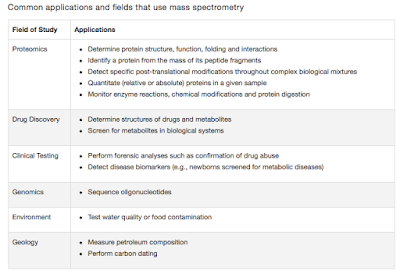Say Hi to "Methanogens in human flora"
Greetings
 |
| Photo 1: Archaea. Source |
One of my very early posts on this blog was on halocins. The post mainly concentrated on an emerging antibiotic of interest that is extracted from Archaea. After that this is my second post on archaea. The Archaea represent one domain, in the tree of life. They represent a very huge variety of species within it. Most of them are extremophiles and are present in extreme conditions. Considering that they are similar to bacteria and many known mesophilic species are present, there has been no description of an archaea as pathogen (as far as I know), is a bit suspicious.
That lead someone to ask "Is there any medically important Archaea?". Let me make the question more blunt first. Is there any archaea of importance to Medical Microbiologists. Most of us, who stick to studying syllabus based would answer "No". For the simple fact that, there is no pathogen of medical importance in this group. But, let me give you a glimpse to "Yes".
Archaea are unlike bacteria or eukaryotes. They possess unique flagellins and ether-linked lipids and lack murein in their cell walls. They have a different metabolic and genetic configuration. With more and more archaea being genetically sequenced, we have more knowledge of their life kinetics.
 |
Photo 2: M smithii shown by
indirect immunofluorescence.
|
Some archaea are also members of normal flora. Archaea have been found to colonize human flora (Such as oral, vaginal flora). The 2 most famous members among them include Methanobrevibacter smithii and Methanosphaera stadtmanae (Thats a difficult to pronounce name). As the detection methods have become more sensitive and specific, we have come to understand more species is residing within us. If you remember reading from my previous posts, I often stress on the fact that, the normal flora has something to do in our body. Somehow, in some way, they are designed to produce some good effects. That's why they are "Normal flora!!!". Methanognens are good in Methanogenesis, a process confined exclusively to the methanogens, and utilizes substrates such as hydrogen, Carbon-di-oxide, acetate, formate, methanol and methylamines for methane generation.
 |
Photo 3: Capsule formation by M smithii
|
With that background, let me now talk about how it becomes medically important to us. In my earlier post on Adenovirus-36 (Link) and Gut microbiome (Link), I emphasized on the importance of Normal flora and how it relates to human health. For starters on medical archaea, how about Inflammatory bowel disease? IBD is a very complicated problem. The problem is mostly because of subtle changes in the normal flora. In fact, there is a good correlation between, IBD and the loss of methanogen flora. Some interesting links have also been speculated between methanogen population and Crohn's disease, Colorectal cancer, Irritable bowel syndrome etc.
Let me come to the most interesting proposal. "M smithii has got a good correlation with obesity". I better make some explanations here.
The gut flora is well populated (>90%) by Bacteroidetes and the Firmicutes. M smithii, can comprise up to 10% of all anaerobes in the colons of healthy adults. It has been proposed that M. smithii can persist in the distal intestine through multiple mechanisms. This includes production of surface glycans resembling those found in the gut mucosa, regulated expression of adhesin- like proteins, consumption of a variety of fermentation products produced by saccharolytic bacteria, and effective competition for nitrogenous nutrient pools. (Taken from Gordon etal). It is also important for digestion of complex sugars. As I said earlier archaeal membrane lipids, contain ether linkages. Archaeal lipids synthesis uses hydroxymethylglutaryl (HMG)-CoA reductase, which catalyzes the formation of mevalonate, a precursor for membrane (isoprenoid) biosynthesis. Given these facts it is probably guessable how the archaea is linked to obesity. This hasn't been proved. Association is not causation.
As an additional note (or the internet famous version, PS), Methanobrevibacter smithii ATCC 35061 genome is 1.85 Million bp long and composed of aprox 1837 predicted genes. The chromosomes are circular.
The purpose of this post is to impress you the fact that archaea in association with humans is an under studied area and maybe they are as important as other members of normal flora in influencing our health condition.
Million M, Maraninchi M, Henry M, Armougom F, Richet H, Carrieri P, Valero R, Raccah D, Vialettes B, & Raoult D (2012). Obesity-associated gut microbiota is enriched in Lactobacillus reuteri and depleted in Bifidobacterium animalis and Methanobrevibacter smithii. International journal of obesity (2005), 36 (6), 817-25 PMID: 21829158
Armougom F, Henry M, Vialettes B, Raccah D, & Raoult D (2009). Monitoring bacterial community of human gut microbiota reveals an increase in Lactobacillus in obese patients and Methanogens in anorexic patients. PloS one, 4 (9) PMID: 19774074
1. Dridi B, Henry M, El Khéchine A, Raoult D, Drancourt M (2009) High Prevalence of M smithii and Methanosphaera stadtmanae Detected in the Human Gut Using an Improved DNA Detection Protocol. PLoS ONE 4(9): e7063. Link
2. Pauline D Scanlan, Fergus Shanahan and Julian R Marchesi. Human methanogen diversity and incidence in healthy and diseased colonic groups using mcrA gene analysis. BMC Microbiology 2008, 8:79. Link
3. Everly Conway de Macario, Alberto J.L. Macario. Methanogenic archaea in health and disease: A novel paradigm of microbial pathogenesis. International Journal of Medical Microbiology. Volume 299, Issue 2, February 2009, Pages 99–108. Link





Comments
Post a Comment